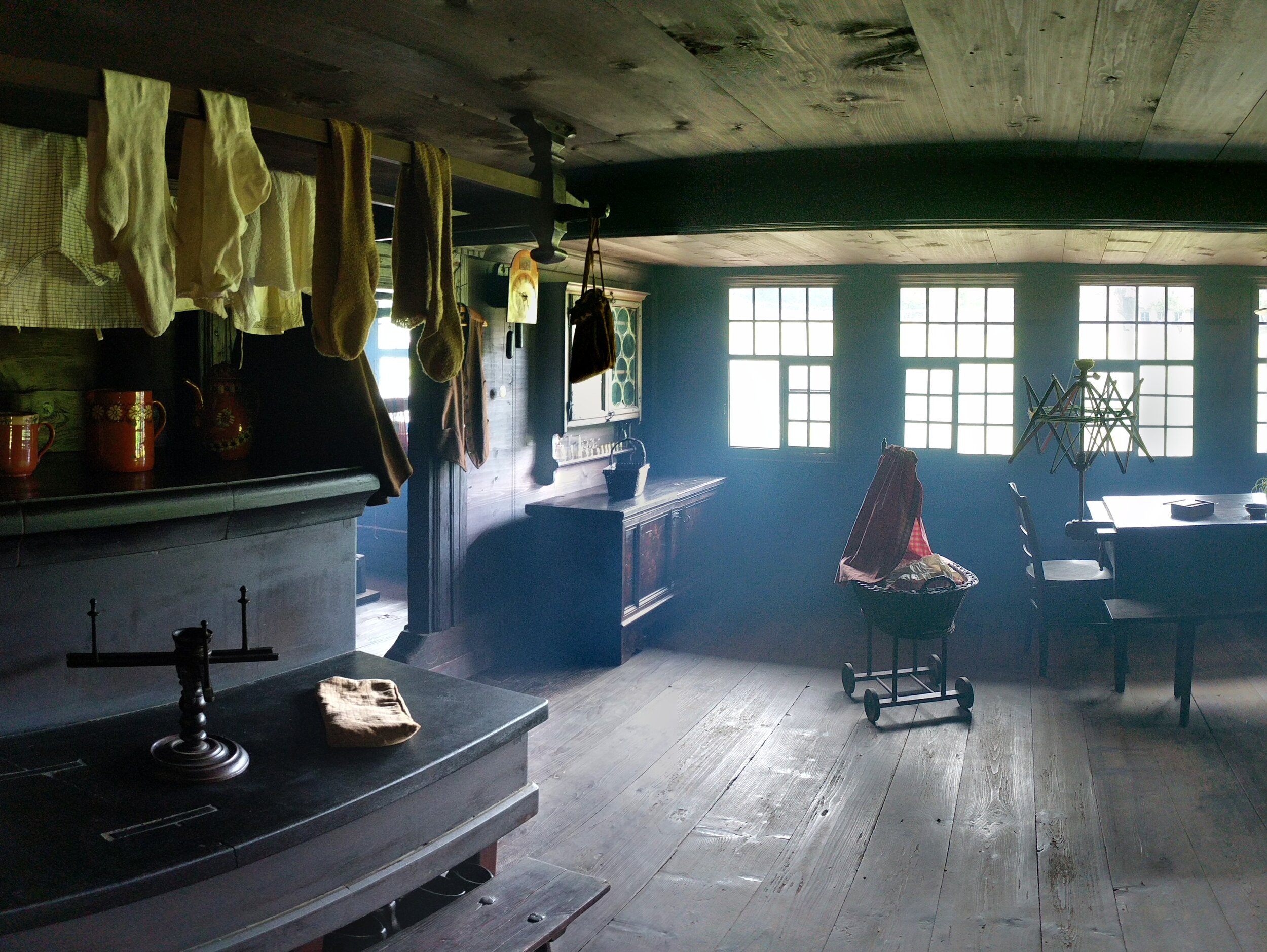Switzerland's Ballenberg Open-Air Museum
/Ballenberg, set against the backdrop of the Swiss Alps
Do you love the rustic beauty of a Swiss chalet set in an alpine setting? There’s something special about these rural mountain farms and homes, and when I learned that Switzerland somehow brought together over 100 of these historic buildings into a 160-acre open-air museum, I knew I had to visit.
Ballenberg is a museum, a place to stroll in nature, and a working farm, too. You can travel back in time while you explore the many historic homes, barns, and cabins, all while interacting with farm animals aplenty. During my visit, I came upon flop-eared rabbits, pigs eating from a trough, chickens parading about, bleating goats, and, of course, cows.
Free-range chickens roaming around an ancient barn at Ballenberg
After paying an entry fee at the front gate, you are free to stroll at your own pace, and enter the maintained-but-not-polished interior of most buildings. I appreciated the museum’s dedication not to bring the buildings back to a new state, instead, they respect the age and history of the structures. The result is remarkable access to ancient structures; getting up-close to the original materials, windows, hardware, and in one case, layers of vintage 19th century wallpaper.
Some buildings at Ballenberg are staged, using the museum’s collection of 45,000 authentic Swiss objects, creating a snapshot of how the buildings would have been used back in the period of its construction. This includes stoves, beds, tables, dishware, clothing, farm equipment, and more.
A glimpse inside a historic home at Ballenberg
You can also explore the working barns, watch farmers in the fields, and visit with the animals. I especially enjoyed walking into a cow barn to get an up-close look at Swiss cowbells, still traditionally worn by farm animals throughout the Switzerland. The cows were also pretty friendly!
Swiss cow wearing a traditional cattle bell in one of Ballenberg’s historic barns
I spent a year abroad in Switzerland as a high school exchange student, so I was already aware of some of the traditional Swiss clothing. This did not prepare me for the diversity of regional costumes on display at Ballenberg. Just take a look at these pleated sleeves, below!
Regional Costumes on display at Ballenberg Museum
I am struck by the expansive, gorgeously maintained trails, gardens, and clear signage, as they allow self-guided wandering through the museum grounds, region-by-region, to learn all about the history of these Swiss buildings. As you stroll through the charming twists and turns of the well-designed trail system, and you should certainly leave yourself at least 3-4 hours to explore the park, you will come across surprise after surprise. I was particularly charmed by the working two-wheel watermill, and a remarkably cute chapel, seen below. Inspect closely the construction materials of each building such as original slate roofing and decorative elements like carved words, striped shutters, or leaded glass windows.
Petite hillside chapel at Ballenberg
How to Visit Ballenberg
If you are not already aware, Switzerland is connected by a fantastic public transportation systems, including trains, buses, and trams. This makes renting a car in Switzerland not necessary or even advisable. Ballenberg appears rural if you check a map, but it is easily accessible by train and bus, and this is how I visited without any issue. Simply book a rail journey to the lakeside town of Brienz. Then hop on one of the frequent yellow post buses that connect Brienz train station and Ballenberg.
Plan your visit as a day trip from anywhere in northern or central Switzerland. It is most quickly reached from Bern, Interlaken or Lucerne. Also, choose a clear-weather day as the grounds are expansive and require a good amount of walking in the elements. There are several cafes within the park, where you can quickly and easily order lunch. Benches and picnic tables are also easily found throughout the museum, for resting or snacking purposes.
Learn more on the official Ballenberg website.
Striped shutters at a Ballenberg home
Has anyone visited Switzerland’s Ballenberg Open-Air Museum? Leave your impressions in the comments section below!






























